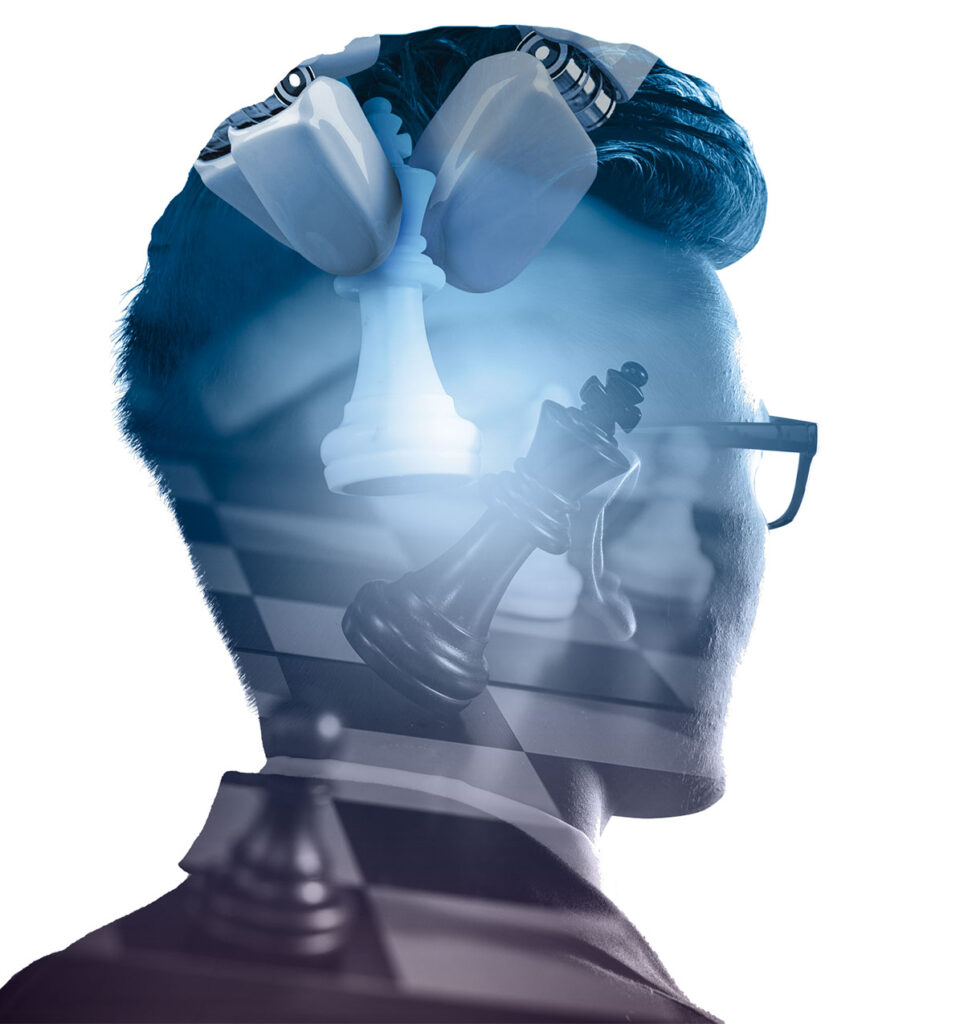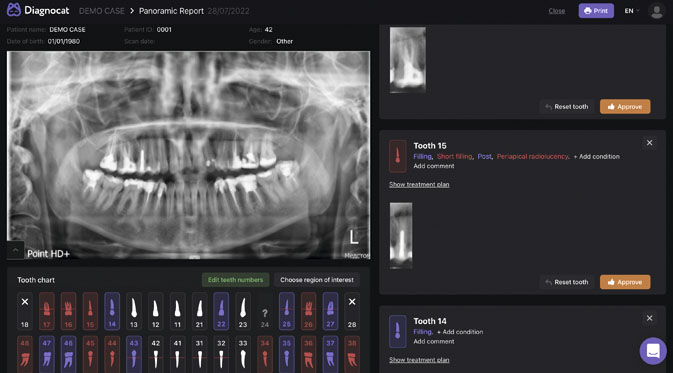Today, AI is being actively implemented in dental practice – thanks to close collaboration between scientists, engineers and medical professionals. How artificial intelligence is developing in the global dental practice, what advantages it demonstrates and whether it can harm – in the article of our experts Anna Solomakhina and Julia Salina.

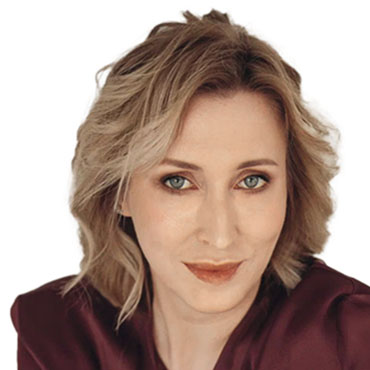
The request for the software came about during the daily practice of dentists. It is impossible to make an accurate and objective diagnosis, as well as to develop a competent treatment without an “inside look”. A radiograph is a valuable tool in the hands of a specialist. But the quality of image analysis varies depending on the human factor – skill, experience and quite possibly lack of time and fatigue. Hence, missed problems, lost time and money, which directly affects the reputation of the doctor, clinic, and business. That’s where AI comes in. Available patient data of any volume and any form is analyzed by the system and then algorithms are developed to solve the problem.
One of the artificial intelligence systems, Deep Blue, a chess program developed by IBM, defeated world chess champion Garry Kasparov as far back as 1997
HOW AI IS USED IN DENTISTRY
Data analysis and predictive analytics
Artificial intelligence’s algorithms process large amounts of patient data, including medical records, oral health histories, and treatment outcomes, to identify patterns and predict future oral health. This allows for preventive treatment, personalized treatment plans, and preventative interventions.
3D prosthetics
Digital printers simulate an image that can be printed without the need for dentures or crowns. Such work is error-free, which saves the several-fold time of both doctor and patient – there is no need for additional “fitting” or “adjustment” of prostheses. The model perfectly fits the patient’s anatomy, and this eliminates the time of habituation, discomfort after installation. In addition to all the advantages of this technology, the speed of prosthetic fabrication is increased many times over, and a copy can be stored digitally for any length of time.
Administrative support
Virtual assistants controlled by artificial intelligence are being used to simplify administrative tasks in dental clinics. The algorithm helps manage appointment scheduling, patient communication, and billing processes to reduce administrative burden and improve overall practice efficiency.
Manufacturing of dental crowns
Special software is used in dental milling machines with high performance, and such devices can serve for a long time. Milling modules are used in the manufacturing of posts, crowns, veneers, full bridges, caps, abutments, etc. The use of AI simplifies the task even further – the individualized radiograph of the patient’s three-dimensional “design” of the teeth is loaded into the memory of the milling machine, and the milling machine only has to make the necessary individual design. The new 3D-DCGAN (3D-Deep Convolutional Generative Generative Adversarial Network) algorithm developed by scientists from Hong Kong perfectly solves such a problem, saving time.
AI has the potential to revolutionize healthcare, and with it dentistry
Diagnosis of dental diseases
AI is used in analyzing x-rays and other diagnostic images to detect dental disease. Special plaforms produce a three-dimensional image of the entire dental arch, then the program makes its analysis and provides a detailed report on the state of the patient’s dental system, which includes a description of pathologies. This allows for a proper treatment plan. AI can also be used to create digital impressions, resulting in a volumetric image that is also processed by special software. This program will be useful in orthopedic, orthodontic and surgical practice. The specialist receives the entire model of the patient’s jaw without having to make an impression. High-quality digital impressions are incomparably more accurate than classic impressions, as the impression mass can deform and shrink.
BENEFITS OF II IN DENTISTRY
High efficiency
AI can automate many routine tasks, from scheduling appointments to handling insurance claims. In most medical facilities, the time for patient appointments is regulated and is often insufficient for a quality physical examination, especially if a complex treatment case is present. AI-enabled techs speed up the decoding of radiographs, the retrieval of patient data, and their routing of additional tests. This can free up dentists’ time so they can focus on patient care.
Individualized treatment
AI can be used to create customized treatment plans based on a patient’s unique needs and medical history. Visualization of dental health is one of the main challenges addressed by AI, because most people are not familiar with the structure of the dental apparatus, and x-rays do not make it easy to fully understand the picture. Special programs provide data on the entire dental arch, pointing out problem areas. When images and reality are compared, the range of work becomes clearer to the patient, and this builds trust in the specialist.
Accuracy
AI algorithms can analyze large amounts of data and identify patterns invisible to the human eye. This ensures an accurate diagnosis and an effective treatment plan. Helping to detail the surveys helps to avoid mistakes. The independence of the evaluation is an important aspect that eliminates errors in cases of different diagnoses made by doctors. The program will help you see an independent objective picture.
Outcome and patient satisfaction
By improving accuracy and personalizing treatment plans, AI can improve patient outcomes and satisfaction. Sometimes there are cases where other specialists such as an orthopedist, surgeon or gnathologist need to be involved to solve the problem. And in these situations, the software can quickly bring the right doctor or a consortium of doctors up to speed.
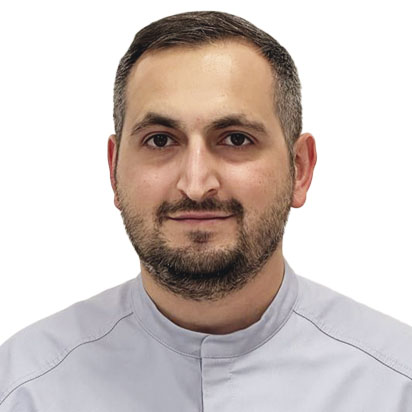
“When placing implants, we use templates every day with full navigation. The computer itself compares all the parameters of the implant with the tomogram, modeling, and the surgeon is already working on these templates. But let’s not forget: the artificial intelligence did not do all this on its own, but with the help of a human being who created it. Yes, and in a non-standard situation, and they are common in dentistry, it is the doctor who will make a better decision. For example, no serious doctor will treat a patient over the phone without seeing the person and their problems. It’s the same with artificial intelligence: you can only use AI recommendations, but the decision is up to the doctor.”
HISTORY LESSON
In 1951, American scientist Marvin Minsky created the first SNARC neural network. But the name “artificial intelligence” was first applied five years later – in 1956 at the Dartmouth Conference in the USA, at the same time the scientific discipline “Artificial Intelligence Research” appeared.
DIFFICULTIES FOR IMPLEMENTATION ANDI
Limited availability
High-tech opportunities, despite all the advantages, are not available to all clinics, it depends primarily on the financial capabilities of the clinic and the interest of the staff.
Technological difficulties
Implementation of special programs requires some specialized knowledge, hardware installation, software maintenance and other technical skills.
High cost
Conditional on investment in equipment, software, additional training for staff, dentists, purchase of upgrades, etc
The issue of data security
To maintain the security of patient personal data, you should consider options to protect against cyberattacks and breaches.
Lack of human emotion
AI cannot replace the experience and critical thinking of a specialist, nor can it build a trusting relationship with the patient.
“I can’t imagine doing without AI support once upon a time. Using an intraoral scanner, I “photograph” not only the desired tooth, but also the neighboring and antagonist teeth and send the scan by e-mail to the dental laboratory, where the technician models the design of the future work, and the robotic milling machine grinds out the desired crown. AI can also be used to match the color of a patient’s teeth, offering them several design options for their new smile. But AI in dentistry is just an auxiliary tool, like all devices in today’s world. After all, no one is going to cancel the doctor’s hands.”
Despite the challenges of innovation, AI will continue to be widely used in dentistry. This is due to the importance of accurate treatments and effective health data sharing
AI PLATFORMS IN GLOBAL DENTAL PRACTICE
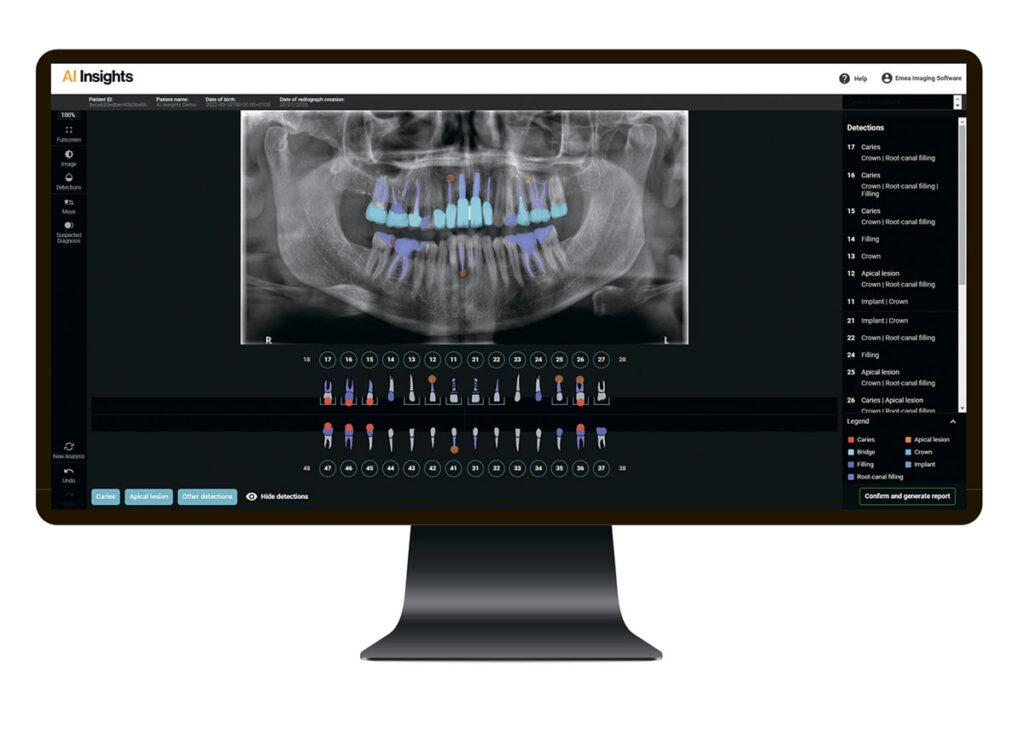
AI Insights (USA) is diagnostic software developed[1]by Carestream Dental to analyze panoramic X-ray images. AI Insights can detect a wide range of pathological and non-pathological conditions – from tooth decay to implants and fillings – and highlights them in color directly on the image, as well as displaying them in an interactive table. Color-coded study results make viewing images understandable for the patient, making it easier to discuss treatment plans and physician recommendations. The results are automatically exported into a detailed report and stored in the patient record, which simplifies the documentation of treatment. AI Insights integrates seamlessly into CS Imaging 8 software.
Denti Al (Canada) – helps identify pathologies and other conditions found on radiographs and CBCT.
Orca (Israel) – wide range: diagnostics, orthodontics, prosthetics.
VideaAl (USA) – diagnosis, caries detection.
“I’m working with Diagnocat. It is a unique tool, a platform for cloud storage and AI-assisted processing of digital dental images. It sort of assists dentists in diagnosis and treatment planning: analyzing and comparing x-rays, doing calculations for the orthodontist, and more. Now it is used by doctors in three hundred and fifty clinics in Russia. In my opinion, AI reduces the risk of medical errors. It happens that at the end of the shift, the doctor, reviewing X-rays, may miss something – from fatigue, or, as they say, “blurred eye”. This is where a special program will help, drawing the doctor’s attention to some problem areas in the patient’s mouth. But it is better to act on the principle: first try, then trust.”
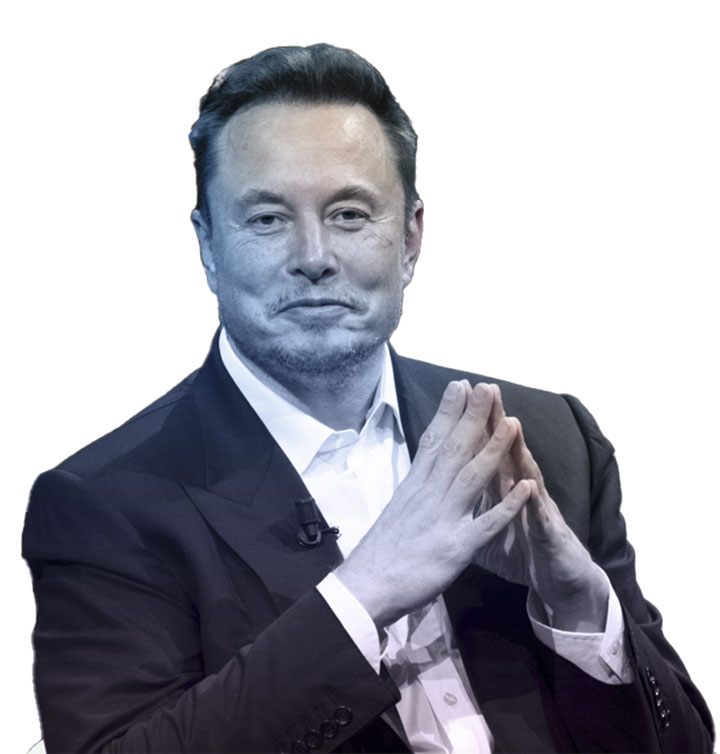
In 2016, Ilon Musk founded Neuralink, a company that develops neurocomputer interfaces. According to the entrepreneur, product testing will be conducted on humans: the device will be implanted in the skull, and the electrode strings coming from it will penetrate directly into the brain. The technology will allow memory and limb function to be restored.
Di.V.A. (Italy) is a digital virtual assistant developed by Castellini that optimizes dental practice management and helps to improve the efficiency of the entire clinic. In real time, the program monitors the status of every piece of equipment connected to the system, provides remote technical support and helps plan maintenance activities. With Di.VA, the clinician can also monitor the functions of the dental unit and analyze the effectiveness of both individual procedures and the practice as a whole: Di.VA collects and analyzes data including equipment uptime and downtime.
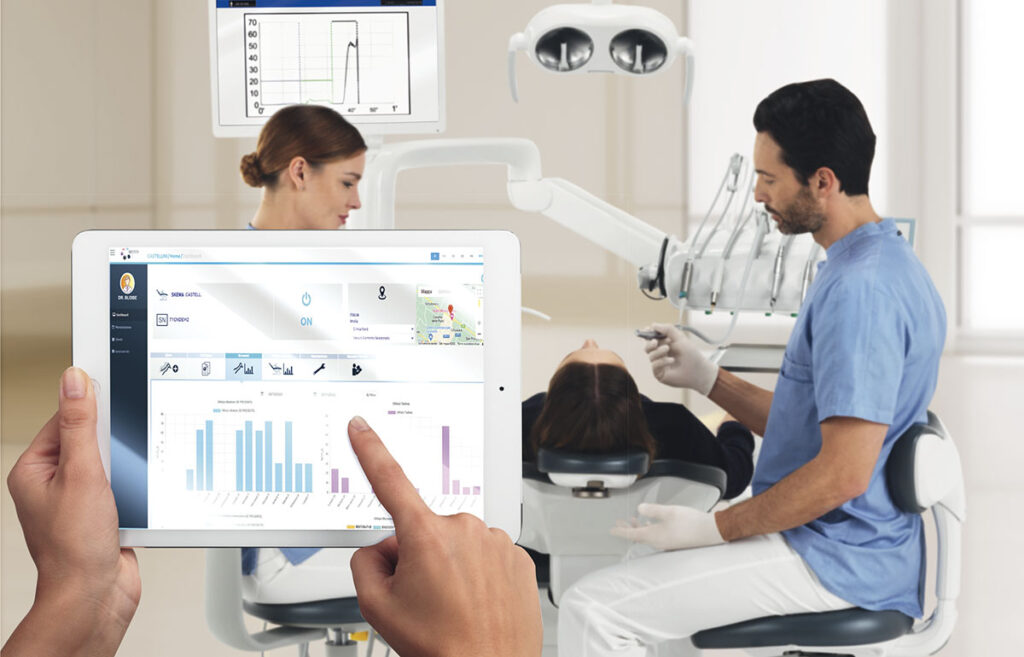
PLATFORMS IN RUSSIAN DENTAL PRACTICE

russian AI research centers will receive grant support from the government and private investors under the Digital Economy national project
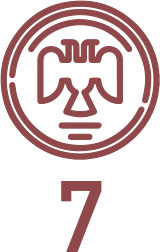
Diagnocat is able to identify up to fifty pathologies that account for 95% of the problems in dental practices. The program is unique with a large volume of neural networks (about 20), which is quite enough for high-quality work in diagnosis and treatment. In addition, the reasonable cost of the program allows any clinic to purchase it.
2023 Dentomo technology was introduced, which creates a virtual anatomical 3D model of the human dentoalveolar system. Dentomo is the first of its kind registered in our country. Currently, the program identifies five dental pathologies: abrasion, dystonia, failed root, decay, and retained tooth. However, these “options” are also more than enough. In addition to the possibility of diagnosing such pathologies, the program indicates the previous treatment (up to ten signs), and this list of specialists-developers continues to be enlarged.
We work with 3D scanning and printing, with robots that grind out, for example, crowns – these processes are monitored by an operator with a technical background. As an auxiliary tool, artificial intelligence greatly simplifies the doctor’s life. But so far he has not been able to reach the main thing: he sees a person as some kind of standard, not an individual. And a person comes to the dentist also to emphasize his or her individuality”.

